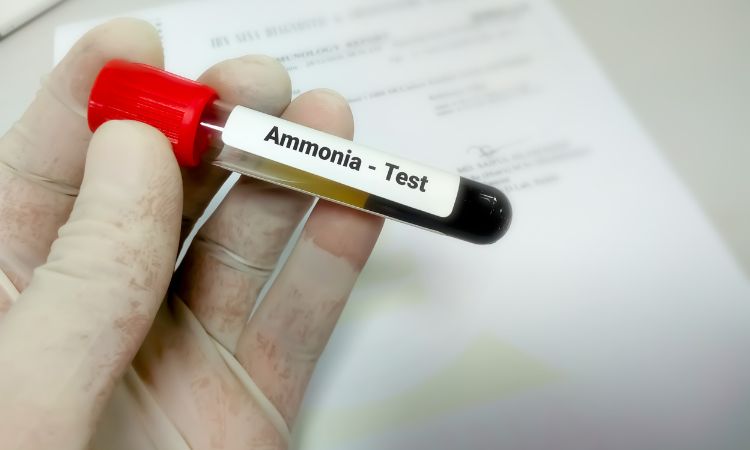The global ammonia market size reached a volume of approximately 194.8 million metric tons (MMT) in 2023. The market is assessed to grow at a CAGR of 1.90% in the forecast period of 2024-2032 to reach a volume of around 218.3 MMT by 2032. These statistics highlight the significant and enduring importance of ammonia in various industries, with one of its crucial roles being in agriculture. In this comprehensive guide, we will delve into the multifaceted world of ammonia and its integral role in modern agriculture.
The Basics of Ammonia
Before we explore its applications in agriculture, it’s essential to understand the basics of ammonia. Ammonia, with its chemical formula NH3, is a colorless gas that contains nitrogen and hydrogen atoms. It’s a vital source of nitrogen, a nutrient essential for plant growth. Ammonia plays a pivotal role in providing the necessary nitrogen for plants to thrive.
Ammonia Fertilizers
One of the primary ways ammonia contributes to agriculture is through ammonia-based fertilizers. These fertilizers are an indispensable tool for farmers worldwide. They come in various forms, including anhydrous ammonia and ammonium nitrate. The advantage of ammonia-based fertilizers lies in their high nitrogen content, which is crucial for plant growth.
Ammonia Production for Agriculture
Ammonia-based fertilizers wouldn’t be possible without ammonia production methods. The two main methods are the Haber-Bosch process and the emerging green ammonia production. The Haber-Bosch process, developed in the early 20th century, remains the dominant method for ammonia production. It involves combining nitrogen and hydrogen under high pressure and temperature to produce ammonia. However, the environmental footprint of this process has led to the exploration of more sustainable alternatives, such as green ammonia production.
Benefits and Challenges
Ammonia-based fertilizers offer several benefits to farmers. They are cost-effective and provide a concentrated source of nitrogen, which encourages plant growth and crop yields. However, their use is not without challenges. Handling and transporting ammonia can be hazardous due to its toxic and flammable nature. Additionally, the release of ammonia into the environment can lead to air and water pollution, posing risks to both human health and ecosystems. Striking a balance between the benefits and challenges is crucial in modern farming practices.
Ammonia Application Techniques
Farmers employ various techniques to apply ammonia-based fertilizers to their fields. These techniques include injection, broadcasting, and precision agriculture methods. The choice of application technique depends on factors like crop type, soil conditions, and equipment availability. Precision agriculture, enabled by modern technology, allows for more efficient and targeted ammonia application, optimizing nutrient uptake by crops.
Environmental Impact
Ammonia has a notable environmental impact, primarily concerning air quality and greenhouse gas emissions. Ammonia volatilization, the process by which ammonia is released into the atmosphere, can lead to air pollution and contribute to the formation of particulate matter and smog. It can also react with other pollutants to form fine particulate ammonium aerosols. Furthermore, excess ammonia in water bodies can lead to eutrophication, disrupting aquatic ecosystems. To mitigate these effects, there are measures and regulations in place to reduce ammonia emissions and runoff.
Future Trends and Innovations
The future of ammonia in agriculture looks promising, with ongoing research and development efforts aimed at enhancing its sustainability. Emerging technologies in ammonia production, such as green ammonia, are gaining attention. Green ammonia is produced using renewable energy sources, like wind or solar power, and has the potential to significantly reduce the environmental impact associated with ammonia production. Additionally, ongoing research is focused on improving the efficiency of ammonia use in agriculture while minimizing its environmental footprint.
Case Studies and Success Stories
To illustrate the practical applications of ammonia in agriculture, let’s look at a few case studies and success stories:
- The Green Revolution: The adoption of ammonia-based fertilizers played a pivotal role in the Green Revolution of the mid-20th century, which significantly increased global food production and alleviated hunger in many parts of the world.
- Precision Farming: Modern farming practices often involve the use of precision agriculture techniques, allowing farmers to apply ammonia-based fertilizers with pinpoint accuracy, optimizing crop yields while reducing environmental impact.
- Sustainable Farming Initiatives: Many farmers and agricultural organizations are actively implementing sustainable farming practices that incorporate efficient ammonia use, reducing waste and environmental harm.

